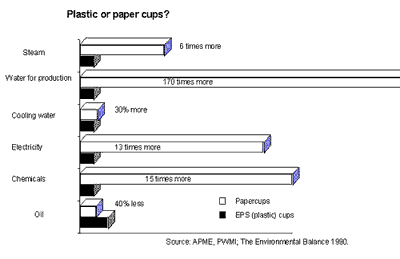EPS and the environment
For EPS packaging production only water and air is needed. All machinery delivers maximum possible use of raw materials and very little material is discarded during production. EPS packaging does not pollute water, be it during production, usage or destruction. EPS packaging is accepted in use with various types of foodstuffs and complies with regulations regarding food safety and demands made by modern society regarding performance.
In the past few years we have witnessed a large movement towards environmental awareness and natural resource management. Pollution is becoming an ever increasing problem and more space for landfills is needed year by year. As plastics tend to take long to decompose in nature, it is only natural that some people see them as a potential threat to the environment. Plastics are light, they float and will easily be caught by the wind if someone has been naïve enough to discard of them in a wrongfull manner. Rubbish on the wind can hardly be the fault of the palastics as such, but more an educational problem with the person that threw them away.

 When assessing environmental impact of various types of packaging for example, it is very important to look at the total life history of the product, or Eco-Balance. One must realise and calculate the amount or type of natural resources and energy used during production and/or transport of the product. There has to be a validation of effects on ground water, water usage, pollution and land. This has to be compared with other options and only then is it possible to establish whether the sollution is environmetally feasable or not. In most cases, one will find out after a thorough study of this kind that plastics are more feasable with regards to environmental aspects than most other materials.
When assessing environmental impact of various types of packaging for example, it is very important to look at the total life history of the product, or Eco-Balance. One must realise and calculate the amount or type of natural resources and energy used during production and/or transport of the product. There has to be a validation of effects on ground water, water usage, pollution and land. This has to be compared with other options and only then is it possible to establish whether the sollution is environmetally feasable or not. In most cases, one will find out after a thorough study of this kind that plastics are more feasable with regards to environmental aspects than most other materials.
It is imperative to pay notice to the following during all environmental discussions:
- Municipal solid waste is about 5% of all waste in Western-Europe. Of this plastics are only about 7%.
- Of the total waste mass, plastics are only about 0,6%
- Despite increase in plastic packaging use, there has not been an increase in its proportion in total waste as packaging has been coming lighter and thinner by the years.
- Lighter packaging, which plastics generally tend to be, requires less use of fuel during transport, thus less pollution and less depletion of natural resources.
- The majority of all plastics and plastics production, does not pollute ground water.
- Only about 3-4% of the worlds oil reserve is used to produce plastics.
In an effort to reduce the ever increasing landfills, there has been some research into the field of waste management by incineration. Modern technology has made is possible to burn waste in a clean and effective manner. Plastics are very important to this process as they increase the calorific value of the waste and thus the inciniration will be more effective and cleaner. The volume of waste is reduced by 85-90% during inciniration. Waste incinration has been conducted in Denmark for several years now with good results. If other European nations where at the same stage in this process as the Danes, there would be about 17 nuclear plants less in Europe.
Our ultimate aim must however always be to minimize waste as much as possible. Designers and manufacturers are of course aware of this and make it their effort during production and design. Plastics are a viable option for them because they know that by using plastics there will be a reduction in:
- energy consumption
- emissions
- material usage
- waste
- costs
Recent German studies indicate, that if we would stop using plastics for packaging there would be a 300% increase in packaging waste mass, a 100% increase in energy use for packaging and last but not least, total volume of waste would increase by 160%. Today, plastics are 10% of the total packaging waste mass. These 10% are used to pack 40-50% of all products. We like to call that performance.
Lastly here is an small case study: Examing the effects of changing from styrofoam cups to paper cups in a univeristy cantine, led students to a new belief. (See chart).
